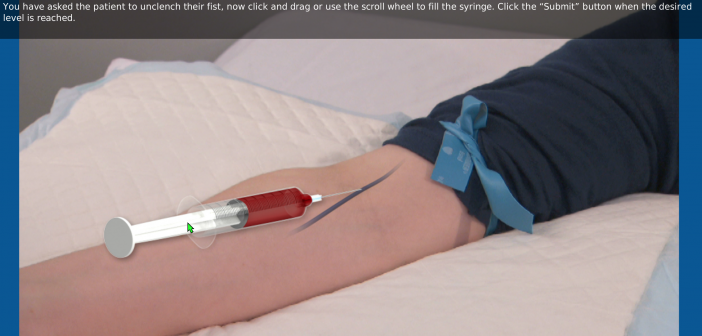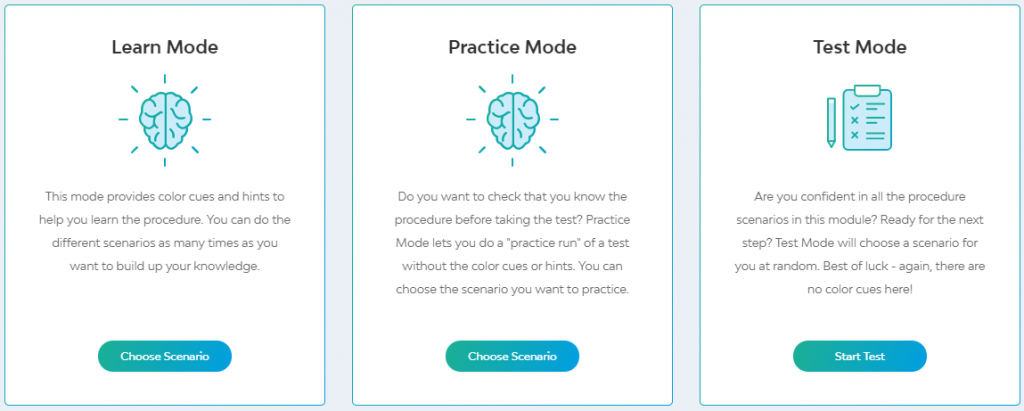Medical Assisting Student Gains Confidence, Purpose and Knowledge through SIMTICS’ Medical Simulation Training, after Teacher Offers Class Different Ways to Learn
How flipping the classroom and offering access to SIMTICS simulations is creating the space for students to gain the confidence they need to excel in the allied health sector.
Washington DC allied health teacher, Nicole Carter R.M.A., decided to try something new with her class last year. As Director of Curriculum and Instructor for the Medical Assistant Program at LAYCCA and a healthcare educator with over 12 years clinical and teaching experience, she wanted her students to feel confident and knowledgeable as they progressed with their studies. She knew there was an opportunity to offer her students another type of support by providing different ways for them to learn and become proficient in the required clinical procedures.
Once she and her class had access to SIMTICS online simulations, she quickly saw results, particularly with one of her more cautious students who had been struggling with using needles and touching simulated patients in laboratory sessions. Nicole persuaded the student to study the SIMTICS venipuncture module in her own time and practice the online simulations as much as she needed, until she felt confident with the steps of the procedure. It only took a few days before the student said she was ready to draw blood for real.
To Nicole’s surprise and delight, this time the student breezed through the venipuncture procedure with a new-found sense of confidence, purpose and knowledge. “I kept reminding her that this was just like the simulation she did in SIMTICS,” says Nicole. “She was like a changed person doing that blood draw. After she had finished, she was so excited, and stated how SIMTICS really helped her and that it should be used for learning all clinical procedures.”
The SIMTICS platform runs in the cloud and allows healthcare students (and professionals) to practice procedures online through medical simulation training – anytime, anywhere. SIMTICS has around a large library of modules, each of which covers one procedure in-depth.
“I have another student who says that SIMTICS helped her pass her CCMA certification. She says she would replay the simulations in her head before answering questions,” says Nicole. “I now use SIMTICS for my weekly one-on-ones with my students. It has made clinical data a dream for me and gives me cumulative and quantitative data that I can use to guide instruction. I LOVE SIMTICS!!!!”
According to SIMTICS Customer Success Ambassador, Cherry Vanderbeke, the outcome that Nicole’s student experienced after learning with SIMTICS simulations is exactly the reason the company’s two surgeon founders developed the product. “It’s all about being better prepared as educated and skilled health practitioners,” says Cherry. “Providing unlimited practice opportunities and flipping the classroom in situations like this can create a learning environment that sees students blossom and flourish.”
The SIMTICS simulations allow students to focus on learning the cognitive layer of the skills without the distractions or stress of juggling equipment and instruments, or being observed. The learner does not have to perform in front of others, or deal with classmates or real patients, and can take as much time as they need to come up to speed, so they are ready for labs and clinicals.
The SIMTICS Medical Assisting suite covers a range of procedures that can be hard to learn, are invasive, or where students often feel they don’t get enough practice opportunity. The modules cover skills such as venipuncture, capillary puncture, phlebotomy, obtaining vital signs, preparing for minor surgery, assisting with minor surgery, removing sutures, performing 12-lead EKG, intramuscular injections, subcutaneous injections, intradermal injections, pediatric assessment, administering nebulizer treatment, irrigating the eye and instilling medication, and obtaining swabs for culture.
For more information or to request a demonstration or guest login, email us now





